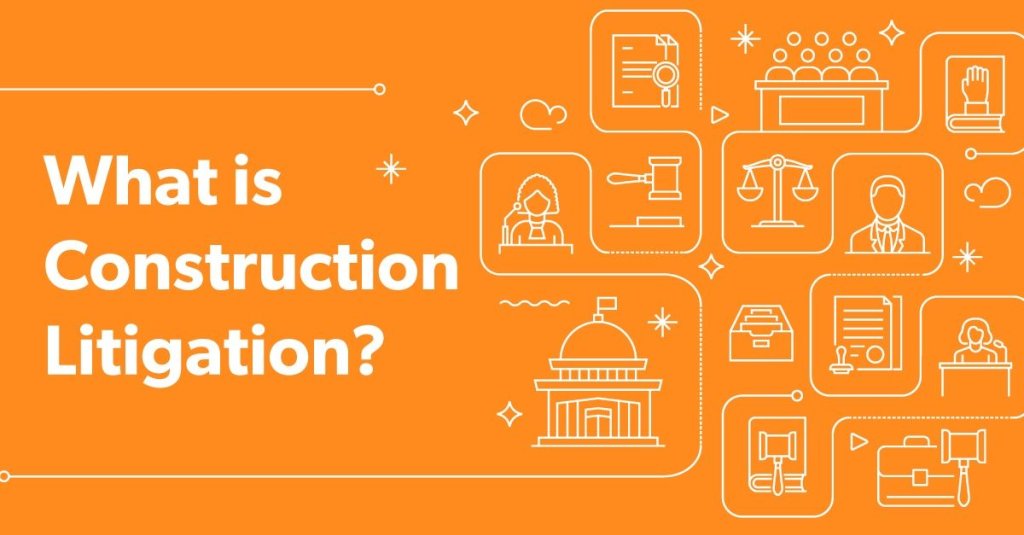Construction litigation is an area of law concerning legal disputes that arise during any stage of the construction process. Construction litigation can be costly and time-consuming for all parties involved, so it’s important to know what causes it and, most importantly, how to avoid it.
Common Causes of Construction Litigation
What do most causes of construction litigation involve? Breaking contractual obligations.
Contracts outline what’s promised between two parties during a construction project. If the end result isn't as stated in the contract (or something on the project goes awry), the affected party may make a legal claim for breach of contract.
Here are four causes of construction litigation that seem to come up again and again:
1. Quality of construction
Quality of construction is extremely important for a number of reasons. For example, if construction isn’t up to standard, the building poses a threat to all who enter—which could potentially lead to catastrophic consequences.
When an owner finds issues with their finished (or nearly finished) structure, or if it doesn't pass inspections, the blame will likely fall on the contractor. So how do you protect your teams? By utilizing construction quality management software and documenting projects with daily reports for legal protection like Sellen Construction did.
Perhaps the laborers weren’t skilled enough, or the materials used were lower quality than agreed upon. There are cases in which claims can be refuted, like when the contractor did use the materials discussed in the contract (or materials proved to be faulty). Either way, a building that is flawed or dangerous clearly needs to be fixed—meaning more costs, more labor, and more time for your business.
2. Construction project delays
Construction delays are arguably the biggest stressor on jobsites for owners, GCs, and subs. They can be caused by weather, permits, materials, labor, safety, noise… and so on.
While delays are generally not the fault of the contractor, some written agreements require a completion date. That means the contractor can incur penalties for every month, or even week, after the cutoff date. We recommend clearly communicating everything in the contract before the project’s start date, so all your bases are covered (including for unforeseen delays).
Things like weather and natural disasters are out of human control. But when it comes to delays due to things like delivering materials or getting permits, the guilty parties are often unaffiliated with the project's contract. Unfortunately, that means the project owner and the contractor are the ones stuck with the blame.
Incorporating weather conditions, photos, and delay updates in your construction reports can help strengthen your documentation (and using a construction daily reporting app can make that process even easier). That way, you can be prepared for unforeseen events—and show when no work could be done.
3. Nonpayment
When general or trade contractors complete a project and the owner doesn’t provide the agreed-upon compensation, contractors can sue for nonpayment.
For most cases of nonpayment, contractors will file a mechanic's lien. These documents go further than just a standard lawsuit. In fact, they become attached to the deed or title of the property, and appear on public record. Meaning, the property can’t be sold until the liens are dealt with. Unless the contractor has gone against the terms of the contract, the owner of the project is obligated to complete the transaction.
In an industry that relies heavily on word-of-mouth recommendations, news of nonpayment will travel fast—making it harder to find contractors for future projects.
4. Workplace injuries
Despite the increase in safety protocols—and dropping rate of jobsite injuries—incidents still occur on construction sites every day.
When a worker gets injured, there’s a lot to consider before deciding who’s at fault. If the worker intentionally puts him or herself at risk, they’re responsible for their own actions. However, if the worker didn’t receive proper safety education (like a toolbox talk) or working conditions are unsafe, their boss would be liable.
Implementing a solid safety program will help you keep crews informed and safe. Using construction safety management software can help you avoid litigation with clean documentation, too.
Protect your construction business from litigation with Raken
With Raken’s construction management software, you get accurate field data in real time. Time-stamped photos and notes, customizable checklists, and digital toolbox talks will help protect your business and mitigate risk.
To see how Raken can work for your business, schedule a personalized demo today. (It even comes with a free trial.)
